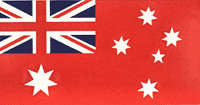 SPARROW FORCE UNITS |
|
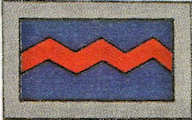 2/1st Heavy Battery 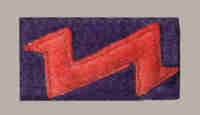 2/1st Fortress Engineers 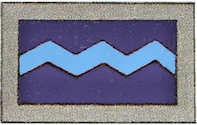 2/1st Fortress Signals 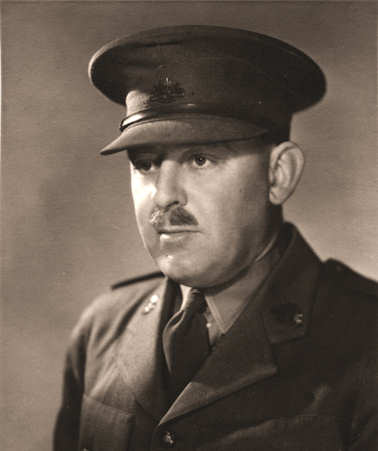 Major A.J.Mc L. Wilson 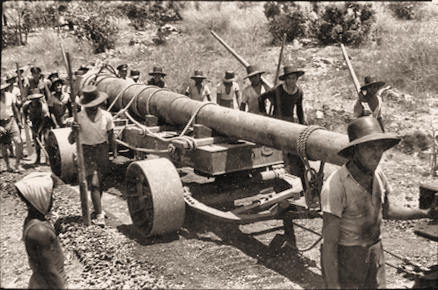 Timorese move a barrel 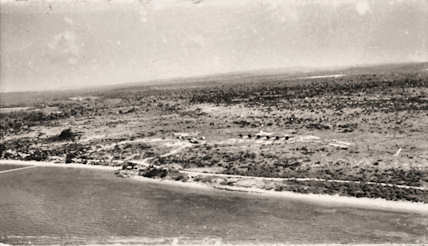 Klapalima aerial view 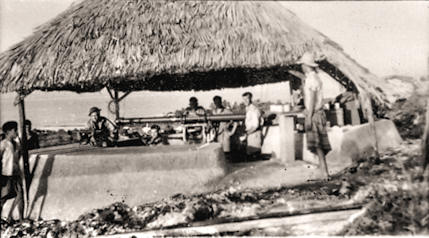 Rangefinder position 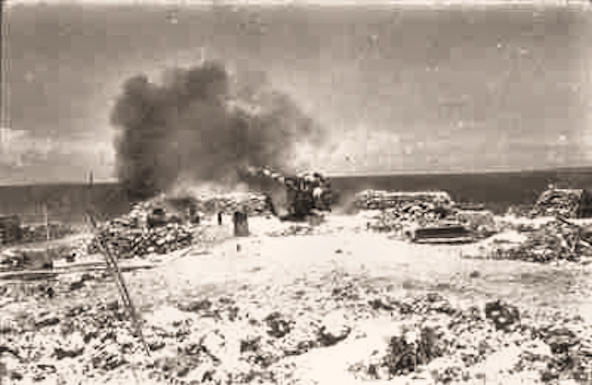 Proofing a 6-in. gun 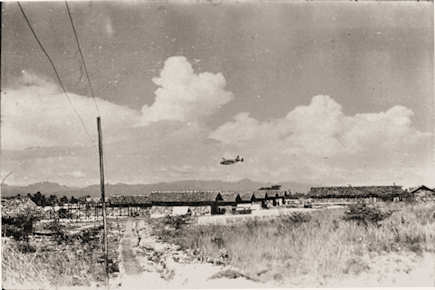 Hudson over Klapalima |
2/1st HEAVY BATTERY, FORTRESS ENGINEERS
& FORTRESS SIGNALS... The 2/1st Heavy Battery was stationed at North Head, Sydney, before their move to Darwin, these men were gunners trained on the big coastal guns. Their supporting units were the 2/1st Fortress Engineers (Royal Australian Engineers) and 2/1st Fortress Signals (Australian Corps of Signals). Some of the men, including the commanding officer A.J.McL. Wilson, had been stationed at Fort Largs on the coast of Gulf St. Vincent, near Adelaide in South Australia. Most men of the 2/1st were from New South Wales.
Before the outbreak of war with Japan, used guns from cruisers and
battleships had been taken from store and mounted on islands
adjacent to the Australian mainland, as well as defending major port
entrances around the coast. On Timor, old 6-inch Mk XI guns regd.
nos. 2015 and 2016 were from the H.M.S. Hibernia while the
cone mounts had come from the H.M.A.S. Sydney (1).
The officer in charge of the 2/1st Heavy Battery, Major Athol
Wilson, had been to Timor a number of times in 1941 to supervise
their
unloading and mounting at Klapalima, a few miles to the east of
Kupang, overlooking the Bay.
The 2/1st
units
left
Sydney by train on the 27th July 1941 and travelled to Adelaide over
the Blue Maintains via Orange, Parkes and Broken Hill.
From Adelaide they again took the train, to Terowie where it changed
to narrow gauge 'The Ghan', for the journey to Alice Springs.
On arrival at 'The Alice', they camped outside town for a few days
and were then loaded onto trucks and taken north in
convoys to the Northern Territory, to the railhead at Birdum, just
outside Larrimah. Then again they boarded trains, although this time
they were loaded into cattle carts for the journey to Darwin. In
Darwin, the men were billeted at Larrakeyah Barracks. This was the
same route that so many servicemen took during the dark days of
World War 2 although the 2/1st and other groups of Sparrow Force
were among the first.
Waiting for months in the Top End saw a drop in morale due to poor
food, many of the men not being kitted out properly and local
conditions.
Finally, after the attack on Pearl Harbor, the 2/1st boarded the
H.M.A.S. Westralia and accompanied the Zealandia
across the Timor Sea with other units of Sparrow Force. They arrived
at Usapa Besar on 12th December 1941 and waded ashore to move to
their new barracks at Klapalima, however quarters were largely
unfinished and much more work lay ahead. Mounting of the guns was
unsatisfactory too, so they were manhandled and remounted farther up
the hillside for a better command of the bay.
The Heavy Battery, Fortress Engineers and Fortress Signals soon
adapted to their new environment, they constructed shell stores,
shelters, barracks, kitchens and a mess hall. The men would go into
Kupang more often than other units of Sparrow Force, mainly because
they were closer to the town.
Japanese air attacks commenced on 26th January when Zeros attacked
the airfield at Penfui. After this there were almost daily attacks
however Klapalima did not suffer much damage from strafing or
bombing, mainly because of a spirited defence by Lewis anti-aircraft
machine gun crews. After a few initial attacks on the gun positions,
the Japanese planes sought easier targets.
On the 20th February, the day of the Japanese landings on the south
coast and co-ordinated landing at Dili, Klapalima was bombed heavily
in a number of attacks.
The
first was at 8.00am and protective works and shelters were badly
damaged.
|
|
Copyright © 2012-2013 Please report any site problems/questions such as broken links here. |
|